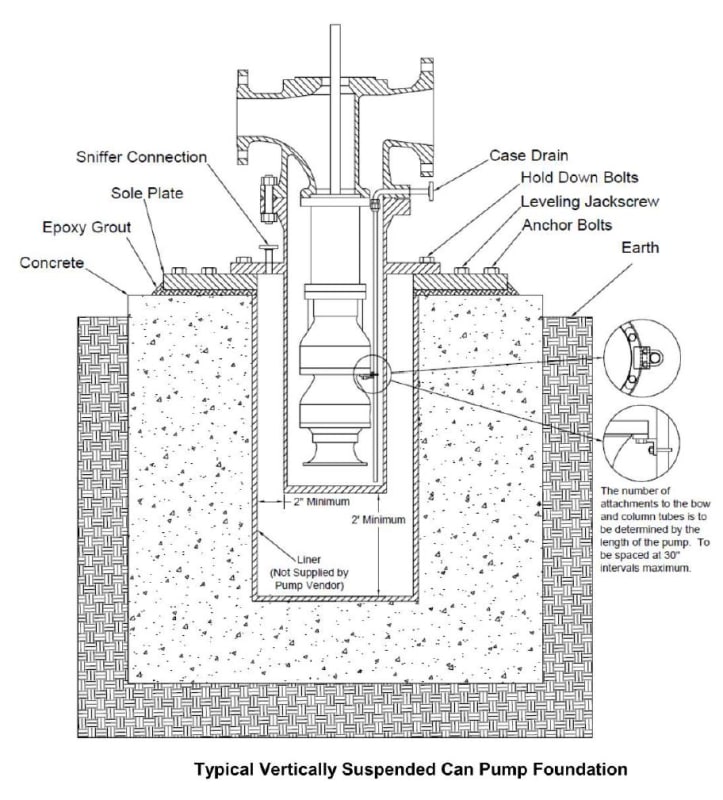When checking a Vertically Suspended Can Pump Foundation, is it necessary to use the Thrust forces as horizontal shear loads/forces to check Soil Bearing, Overturning & Sliding? Or would using these forces be considered too conservative?

The link contains a picture of a typical Vertically Suspended Can Pump Foundation. along with the formulas for the soil bearing, overturning & sliding checks for foundation design:
PIP states for pump foundation design the following:

Could this be interpreted to mean that as long as the foundation is sized for at least 3 times the weight of the pump, the Thrust forces do not need to be considered as acting on the foundation? If so, then would it not be necessary to consider the thrust forces for the soil bearing, overturning & sliding checks?
Comments/suggestions are appreciated.

The link contains a picture of a typical Vertically Suspended Can Pump Foundation. along with the formulas for the soil bearing, overturning & sliding checks for foundation design:
PIP states for pump foundation design the following:

Could this be interpreted to mean that as long as the foundation is sized for at least 3 times the weight of the pump, the Thrust forces do not need to be considered as acting on the foundation? If so, then would it not be necessary to consider the thrust forces for the soil bearing, overturning & sliding checks?
Comments/suggestions are appreciated.


